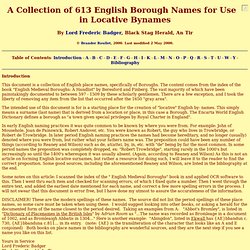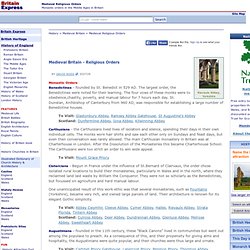

BUBL LINK: Medieval history.
Oxford documents. A Medieval Mystery. This lesson is suitable for KS3 History Unit 19: 'How and why did the Holocaust happen?

' and could also be used to support Citizenship at KS3 Unit 4: 'Britain - a diverse society? '. The cartoon depicts the profoundly negative way in which Jews were viewed in 13th century England. Their situation did not improve. In 1290 King Edward I expelled every Jew from England, the first time this had happened anywhere in Europe. Thousands of men, women and children were forced to leave for the Continent and Jews were not officially allowed to live in Britain again until 1655. There are a number of figures in the cartoon that we can identify: Isaac fil Jurnet Isaac fil Jurnet was one of the richest Jews in England and certainly the richest Jew in Norwich, where he and his family had lived for a number of generations. Isaac was the chief money-lender to the Abbot and monks of Westminster. Isaac is pictured with a triple beard to associate him with the devil and suggest sexual excess.
Mosse Mokke Abigail.
The Britannia Lexicon. Have you always wanted to travel back in time to the Middle Ages but were hesitant because you didn't speak the language?
Presenting the Britannia Lexicon of strange legal, feudal, chivalric, monastic, military and architectural terms to help you understand what those guys back then were really trying to say. In addition, we will soon be including lengthier entries on particular events, wars, movements and organizations, called "Sidebars of History" which will give a more in-depth view of life, politics and religion in medieval Britain. Just click a letter below to begin. Medieval History.
History. List of Catholic Heresies and Human Traditions. ADOPTED and PERPETUATED by the ROMAN CATHOLIC CHURCH IN THE COURSE OF 1600 YEARS (Compiled by Rev. Stephen L. Testa) “And ye shall know the truth, and the truth shall make you free.” —Jesus in John 8:32 Notice: These dates are in many cases approximate. And doctrine to be true must conform to the Word of God. The Domesday Book Online - Derbyshire F-R. A Collection of 613 English Borough Names for Use in Locative Bynames.
By Lord Frederic Badger, Black Stag Herald, An Tir © Brander Roullet, 2000.

Last modified 2 May 2000. Table of Contents- Introduction - A - B - C - D - E - F - G - H - I - K - L - M - N - O - P - Q - R - S - T - U - W - Y - Bibliography Introduction This document is a collection of English place names, specifically of Boroughs. The intended use of this document is for is a starting place for the creation of "locative" English by- names. In early English naming practices it was quite common to be known by where you were from. Some notes on this article: I scanned the index of the " English Medieval Boroughs" book in and applied OCR software to this. Yours in Service Lord Frederic Badger Black Stag Herald, An Tir List of Place Names followed by Date (note: spellings are modern, the date is the first recorded instance of the Borough being mentioned in a period text.
(note: spellings are modern, the date is the first recorded instance of the Burough being mentioned in a period text. Medieval research. ORB: The Online Reference Book for Medieval Studies. ORB: The Online Reference Book for Medieval Studies. Religious Orders in Medieval Britain. Monastic Orders Benedictines - founded by St.

Benedict in 529 AD. The largest order, the Benedictines were noted for their learning. The four vows of these monks were to obedience,chastity, poverty, and manual labour for 7 hours each day. St. Dunstan, Archbishop of Canterbury from 960 AD, was responsible for establishing a large number of Benedictine houses. To Visit: Glastonbury Abbey, Ramsey Abbey Gatehouse, St Augustine's Abbey Scotland: Dunfermline Abbey, Iona Abbey, Kilwinning Abbey Carthusians - the Carthuisians lived lives of isolation and silence, spending their days in their own individual cells. To Visit: Mount Grace Priory Cistercians - Begun in France under the influence of St.Bernard of Clairvaux, the order chose isolated rural locations to build their monasteries, particularly in Wales and in the north, where they reclaimed land laid waste by William the Conqueror.
To Visit: Crossraguel Abbey (Scotland) To Visit: Bayham Abbey, Shap Abbey Scotland: Dryburgh Abbey.